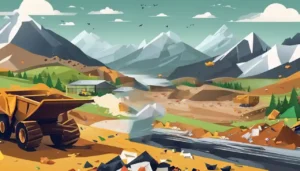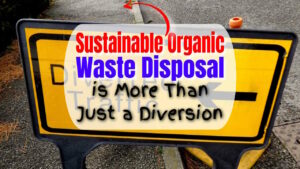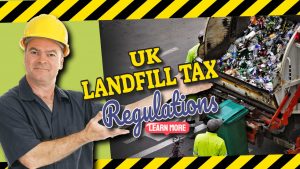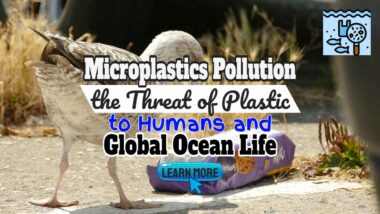To ask how many landfills there are is an interesting question, but not a quick one to answer. It may be answered as a question at the national level of “how many landfills in my country” and we will do that for a number of countries in the sections that follow, but first, we will answer the question at a global level for landfills actively being filled today.
Landfills Per Head of Population
In the US there are very approximately 2,000 operational landfills or 2,000/330 million population or 1 per 6 million people.
In the UK there are very approximately 500 operational landfills or 500/67 million population or 1 per 7.5 million people.
That does not include the thousands of closed landfills still emitting methane in the UK alone.
How Many Landfills are There?
If there were the same number of landfills around the whole world as in the US (population 330 million), where they have about 2,000 landfills and about 1/24th the global population of 8 billion (in 2022) there would be 48,000 active landfills.
So, there are at least 48,000 landfills taking waste every day around the world.
That is based on the assumption that less wealthy developed countries have at least as many landfills per head of population because they have less transport infrastructure to transport waste as far as they do in the US. On average we think that garbage sites tend to be more frequent and smaller than in the US, but they are still large and capable of massive emissions.
Imagine the noise, dust and smell of all those dumps, let alone the methane emissions warming our climate!
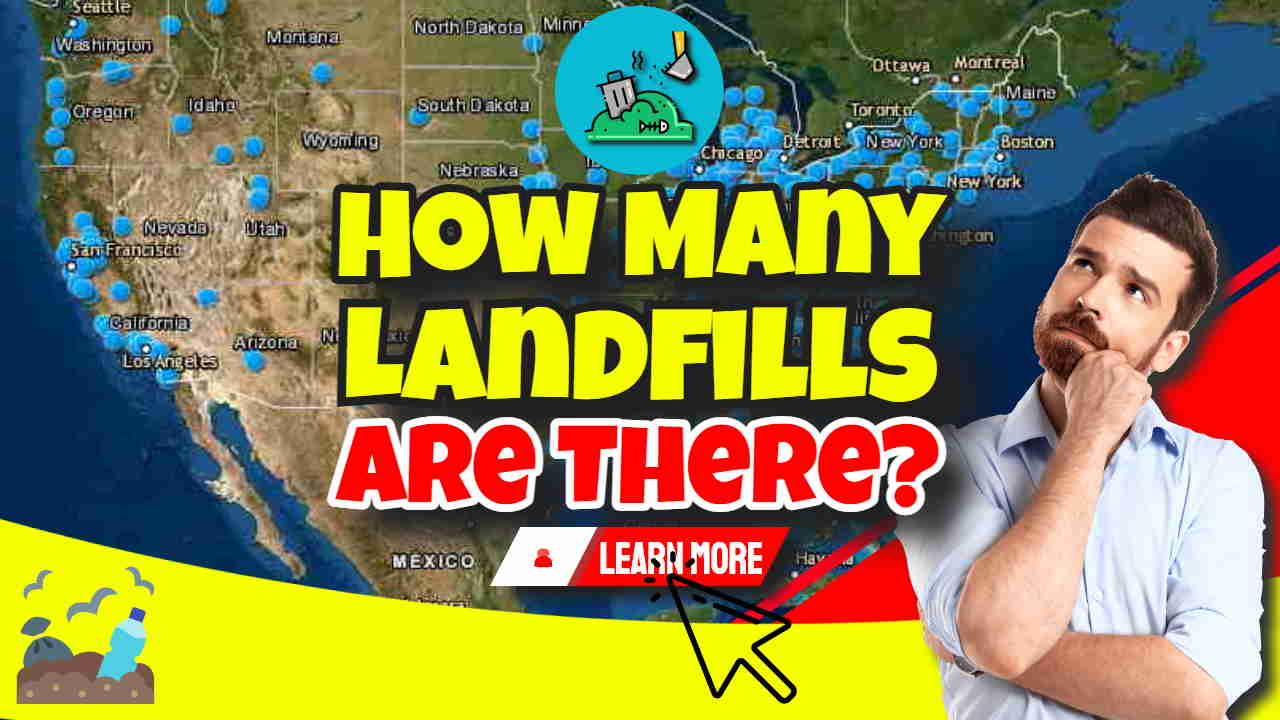
How Many Landfills are there in the US?
According to the United States Environmental Protection Agency (EPA) report from 2016, the number of operational municipal solid waste landfills ranges between 1,900 and 2,000. Only 1,540 operational municipal solid waste landfills were counted in the United States in a 2013 study conducted by the Environmental Research and Education Foundation. The decomposition of waste in these landfills produces landfill gas, which is roughly half methane and half carbon dioxide. Source: en.wikipedia.org
A landfill is the oldest form of waste treatment and is a site for the burial of waste materials.
Historically, landfills were the most common method of organised waste disposal, and they still are in many parts of the world. The US government recognises the sites they have named as Superfund sites as contaminated with hazardous substances as well as broadly defined “pollutants or contaminants” and in need of cleanup.
In 1986, there were 7,683 landfills in the United States. By 2009, there were just 1,908 landfills nationwide: a 75% decline in disposal facilities in less than 25 years.
However, this number is deceptive. Much of the decrease is due to the consolidation of multiple landfills into a single, more efficient facility. Also, technology has allowed for each acre of a landfill to take 30% more waste. So during this time, the available landfill per person has increased by almost 30%. Source: en.wikipedia.org
In the United States, LMOP monitors key data for landfill gas (LFG) energy projects and municipal solid waste (MSW) landfills. The LMOP Landfill and Landfill Gas Energy Database (LMOP Database) contains information about projects at various stages of development, including planning, under-construction, operational, and closed, and serves as a data repository for over 2,600 MSW landfills. Source: www.epa.gov
How many landfills are in the US in 2022?
There are about 2,000 active landfills in the country, and the average American throws out 4.4 pounds of trash a day.

How many closed landfills are in the US?
The United States has over 10,000 closed municipal landfills.
They are necessary for the proper disposal of solid waste. They reduce the amount of waste that makes it into the environment, help to prevent disease transmission, and keep communities clean. Source: int-tech-mtng.org
The U.S. had 3,091 active dumps (in 2016), according to the Environmental Protection Agency. However, in the “good old days,” every town (and many businesses and factories) had its own dump. Source: heimduo.org
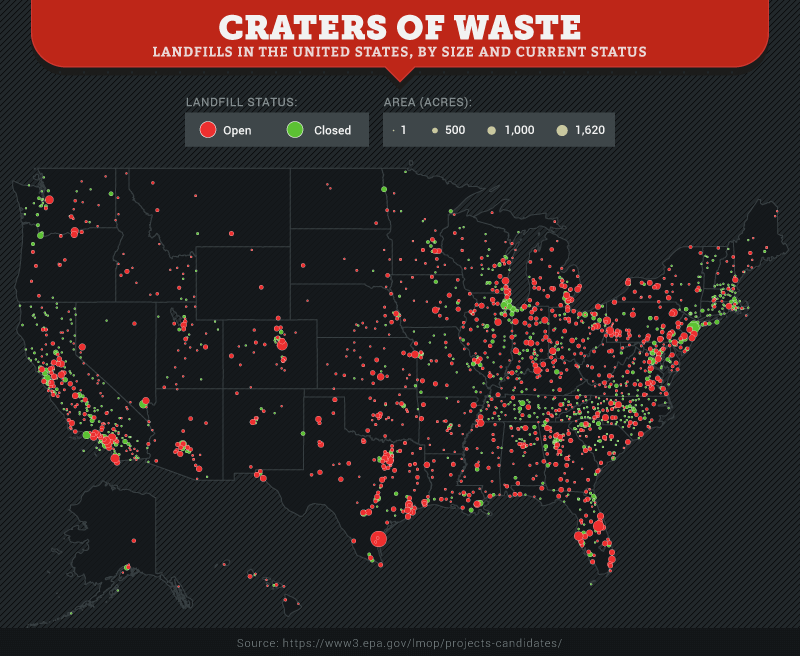
How Many Landfills are there in the UK?
There were around 500 operational landfills in England and Wales in 2020, according to the UK government website at data.gov.uk
574 Landfill Sites in the Four UK Nations in 2020
The LoveJunk website provides a map with the permitted UK landfill sites marked, based upon the fact that operating a landfill requires a permit from the Environment Agency. There were a total of 574 in the four nations including Scotland and Northern Ireland, according to the latest data (which we assume to be the 2020 data). Look at the static map above and appreciate just how much further we have to go in terms of creating a circular environment.
310 UK Landfills Accepted Waste in 2019
According to Let's Recycle, at the end of 2019, there were 533 landfills with an environmental permit and 310 that had accepted waste. Forty-nine of these were in the East of England and 57 in the South East. Source: letsrecycle.com
The Guardian Newspaper Reveals 100s of Old Landfills with Hazardous Waste
According to the Guardian Newspaper, an analysis of official data has found hundreds of landfills which exist around England and Wales containing hazardous waste that is located beneath green spaces, schools and housing.
Experts say authorities are “setting themselves up for a large sequence of nasty surprises” if the toxic substances were to escape, with council funding shortfalls meaning many sites are not being dealt with appropriately. The contents of hundreds of sites remain unknown even to the Environment Agency (EA).
Ends Report Identifies 21,000 Old Landfills in England and Wales
According to agency data mapped by the Ends Report, there are more than 21,000 old waste tips scattered across England and Wales. Of these, 1,287 are categorised as containing hazardous waste, which could pose a health risk to people and the environment it escapes into the surrounding air, water, soil and vegetation.
Some 7,265 of the old dumps hold industrial waste, with many containing “industrial liquid sludge”. At 413 further sites, the waste has been categorised by the EA as unknown. Source: theguardian.com
In England and Wales, there are 19,706 historic tips recorded in the Historic Landfill Sites National Dataset (Environment Agency, 2017). More sites may exist as it is believed records are incomplete (Cooper et al., 2013).
Veolia Operates 6 Landfill Sites in the UK
The UK's largest waste management company Veolia operates 6 landfill sites for the disposal of Hazardous and Non-Hazardous wastes that are strategically located around the UK.
How many historic coastal landfill sites are there?
Around the coast of England, there are 1,215 historic coastal landfill sites (Brand et al, in review). Source: qmul.ac.uk
Coastal landfill sites are concerning scientists because as sea levels rise they will be the first to become eroded and for their contents to enter the sea.
How Many Landfills are There in the EU?
Landfill practice still, in 2022 varies enormously throughout Europe. As far as our research has shown, the data available now (despite being updated since the table shown below), is similar to that shown in the table, as follows:
- landfill numbers vary widely per head of population
- the status of the listed landfill is not always clear.
So, we have not been able to provide a meaningful estimate of how many landfills there are in the EU.
The following is an archive version of our original August 2014 article on this subject:
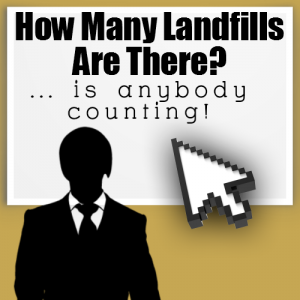 The question “How Many Landfills are There in the EU (European Union)?” is one which we have often been asked.
The question “How Many Landfills are There in the EU (European Union)?” is one which we have often been asked.
Due to the kind assistance of Idan, a visitor to this site who found this table for us for landfills in Europe, we can at least provide a table of data for Europe from a report written in 2005 for the EU.
You will notice that there was a big reduction in numbers over the period 1998 to 2001. That was due to the implementation of new Landfill Regulations.
For landfill site owners the cost of implementing the new, and much higher environmental standards in Europe, which still exist today, was the reason for so many landfill site closures. Large numbers of landfill sites were simply not extended into new cells when the new regulations came into force and were shut.
Table 1: Number and type of landfills in the (EU) Member States
*a – Inert landfills before the implementation of the Landfill Directive do not include landfills for excavated soil. Attribution:The table above is included in the results (page 22) of a study into the implementation of Council Directive 1999/31/EC on the landfill of waste undertaken on behalf of the European Commission (EC), Report on Implementation of the Landfill Directive. By Natalie Collier and Ed Perry. REF ENV.A.2/ETU/2004/0016 | ||||||||||||||||||||||||||||||||||||||||||||||||||||||||||||||||||||||||||||||||||||||||||||||||||||||||||||||||||||||||||||||||||||||||||||||||||||||
[Article first posted in August 2014. Updated September 2022.]
Can You Visit a Landfill Site in the UK?
Can You Visit a Landfill Site in the UK? Have you ever wondered if you can visit a landfill site in the UK? Many people think about what happens to their rubbish after it gets taken away. So, why not go and see one? Not an old one, long since covered in soil and made […]
Unfashionable Talk About Landfills
Get ready for unfashionable talk about landfills! Let's talk rubbish—literally. You might not think about landfills much unless the smell drifts your way on a windy day or you're tossing out the garbage. But these dumping grounds are more than just piles of junk; they're a snapshot of our consumer habits and a challenge we need to tackle. Landfill […]
Sustainable Organic Waste Disposal is More Than Just a Diversion
In recent years waste management experts often talk about diverting organic waste from landfills. In this article, we explain why diversion is just the first step in a virtuous circle toward much more sustainable organic waste disposal. Read on to find out why sustainable organic waste disposal is more than just a matter of diversion. […]
UK Landfill Tax Regulations – Effects and the Rate for 2021
UK Landfill Tax Regulations first came into being on October 1, 1996, when the United Kingdom government imposed a landfill levy on trash disposal in landfills. The tax's goal was, and continues to be, to encourage businesses and consumers to produce less trash, dispose of less garbage in landfills, and recover more value from trash […]




